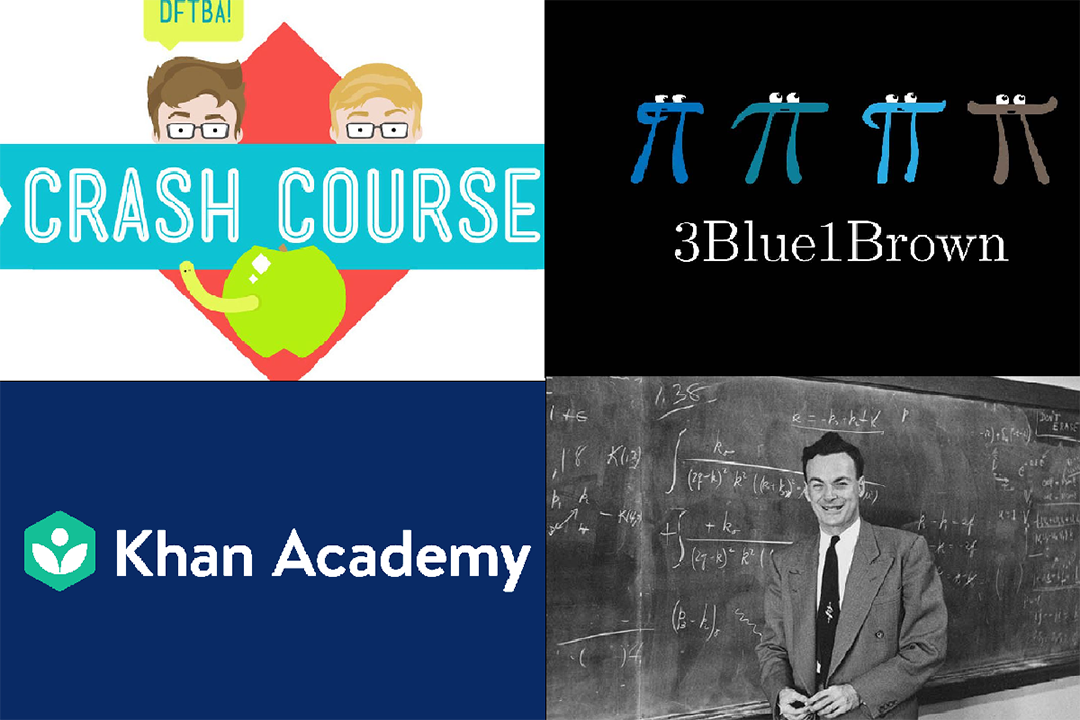If you feel lost in the first few weeks of classes, you’re not alone.
The transitions from high school to first year, and from first year to second year are very sudden. It’s natural to feel unprepared for course syllabi, and even a sensible syllabus doesn’t matter if your lecturer just confuses you.
So, for all you first-year and second-year students, we’ve prepared a list of some of the most useful online resources for STEM classes. You might even find that staying home and watching these videos is a better use of your time than going to class.
General: Crash Course
Crash Course is an educational YouTube channel and the brainchild of TikTok sensation Hank Green and his brother, the writer John Green. Students in high school and early years of university have been using Crash Course for years as a substitute for unprepared lecturers.
Each crash course focuses on a different topic and has a different presenter, aside from the occasional series presented by the Green brothers. Completed series have covered all areas of the STEM spectrum, including anatomy and physiology, chemistry, computer science, statistics, and zoology, to name a few.
In addition, Crash Course partners with Arizona State University to create a series called “Study Hall.” These videos focus on more specific topics than the ones explained on Crash Course, so they can often be a useful supplement. For example, the Crash Course chemistry tutorial on acid-base reactions pairs well with the Study Hall tutorial on balancing chemical reactions.
General: Khan Academy
It’s impossible to compile a list of online STEM resources without mentioning Khan Academy.
The not-for-profit organization has been churning out video tutorials for years, all using the same boilerplate ‘Etch a Sketch software.’ Their topics tend heavily toward the high school level, so if you need a refresher on precalculus or trigonometry, they can be very useful — although it’s hard to get much use out of them for more advanced math courses in upper years. The calculus, linear algebra, and differential equations tutorials will cover a lot of first- and second-year material, but after that, you’re on your own.
Another drawback is their style of presenting. Khan Academy’s straightforward diagrams are no more sophisticated than a blackboard — which means that the difficulty of drawing insightful pictures with chalk carries over to their videos. The emphasis is on quantity, not quality.
Math: 3Blue1Brown
3Blue1Brown is everything Khan Academy isn’t. It’s a series of lively, animated videos that pictorially demonstrate mathematical concepts, including ones that are fairly advanced. Grant Sanderson, creator of the YouTube channel, emphasizes the importance of insight into concepts, not just applying them.
The linear algebra series is a particularly strong example of Sanderson’s philosophy. It’s an excellent complement to any first-year linear algebra courses, covering the gaps where explanations in textbooks can often be very abstract. 3Blue1Brown’s videos demonstrate why a concept is useful, not just how to use it.
Physics: the digitized Feynman Lectures
Richard Feynman’s lectures have long been famous among physics and engineering students for their clarity, insight, and sense of humour. When the Nobel laureate’s lectures were synthesized into a three-volume series of textbooks, they became instant must-haves for first- and second-year undergraduate students.
But you don’t need to buy them from the bookstore. The California Institute of Technology has made the entire series available online, for free, alongside supplementary materials and practice problems.
The lectures cover a wide range of topics with a depth that will carry you comfortably into second-year physics courses. They are also accompanied by helpful illustrations.
Coding in Python: Neural Nine
There are many online resources to learn coding, but the YouTube channel Neural Nine stands out for its quantity and diversity of videos. The channel focuses mainly on Python. There are tutorials for people completely new to the language, but the videos are best-suited for programmers with a bit of experience under their belts.
They go in depth into specific Python tools and libraries, and demonstrate how to build original projects, like a simple web browser or Twitter bot. Additionally, the projects are filmed in real time, so you can follow along without pausing to catch up.
There are many more resources out there. Ask around — you might just find that the best resources are sitting next to you in class.


